Rachel Harrison’s acidic colors, faux-finish surfaces, and otherwise unseemly media screech like saboteurs of good taste. Unlike a certain nascent presidential candidate, however, they don’t mistake tackiness for sophistication. Instead, they scramble the two into a wonder of aesthetic neurosis, alive with self-knowledge. Now, in two simultaneous exhibitions, Harrison agitates an implacable social compulsion – that which forms between faith and material impediment. While one exhibition provides a setting for this conflict, the other offers an unsparing translation of its horrible convulsions.
A few years back, Rachel Harrison caught wind that the Virgin Mary had been spotted in a residential window, in Perth Amboy, New Jersey. Jig-sawed by highways, New Jersey is an animate contradiction between the pastoral and poverty. When this apparition became news, Harrison set off for the small city, camera in hand. The resultant photographs skirt Perth Amboy, and show the blessed window framed in cheap plastic and embedded in beige vinyl siding. Unlike tabloids, which cruelly lampoon faith, these photos subject it to kind of fabulist journalism. In each, human palms reach out to touch the glass, in the way of Baptist revivals. The faces attached to these hands are hidden behind pooling reflections of cloud and sky. So the people become phantoms. Sometimes they reach through the window to touch its exterior side. In these moments they seem to be verifying their own architectural body – the only positive proof of social being in capitalist America. Made from cheap cardboard and dime-store bric-à-brac, the rest of Perth Amboy intertwines the spendthrift fantasy of childhood forts with a budget overture to Minimalist sculpture, and the quasi-spiritual gristle of consumer culture.
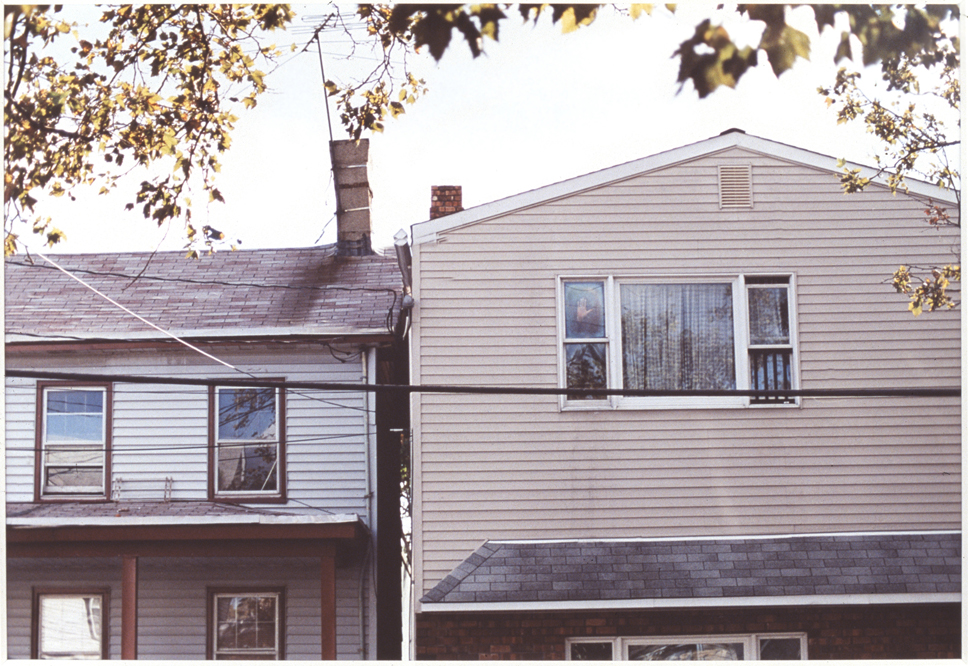
Rachel Harrison, “Untitled from Perth Amboy,” 2001. Courtesy of the artist and Greene Naftali, New York. © 2016 Rachel Harrison.
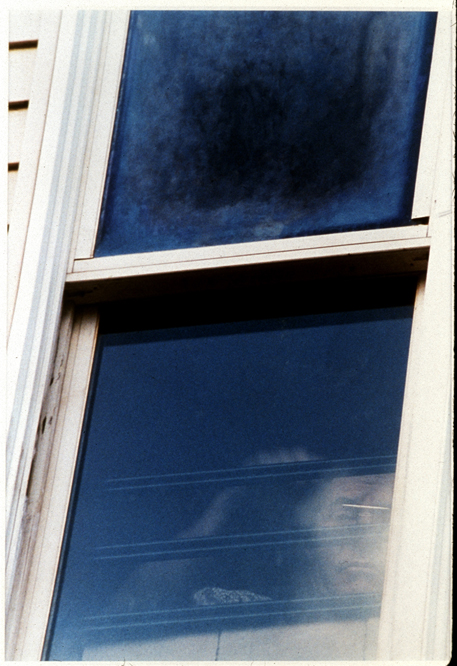
Rachel Harrison, “Untitled from Perth Amboy,” 2001. Courtesy of the artist and Greene Naftali, New York. © 2016 Rachel Harrison.
Half an hour South-West of MoMA, More News: A Situation finds Harrison coughing up the imbroglio of American politics, in a virtuosic nettle of readymade sculpture, social satire, and spatial fascination. Greene Naftali has the feeling of a stripped-down stock-trader’s loft in some 1990s thriller. It’s accessible through one ancient elevator, operated by attendants who seem unusually pleasant, considering the many hours they spend in an iron box. The gallery’s secretive aura is emphasized in More News, with Harrison’s name absent from press material. Some conjecture that she feels sheepish about this new work, which gapes at the most obvious subject – the stupidity of American politics. The exhibition is exquisitely dumb, like a pathetic party joke buoyed by perfectly droll timing.
As in Perth Amboy, Harrison’s More News detects a knot of conflicted belief, and goes to work metamorphosing it. Now her subject is Donald Trump, and the piñatas caricaturing him that have provided a temporary bonanza – and poetic justice – for a niche group of craftspeople in Mexico and Los Angeles. Trump’s stumpy bodies dangle like cured meat from a cats-cradle of fluorescent nylon cords. They are joined by toy cars in mesh nylon bags. Often the cords are pulled taught to the limestone floor by cinder blocks, and other times by chunks of foam faux-finished to mimic rock, and painted in caustic fades – a Harrison trademark. There are also red-painted tools, and Harrison’s facsimile of Marcel Duchamp’s readymade wine rack. Elsewhere, tiny Trumps peek out of a cardboard box, and an office waste-basket. Secret fantasies are whetted when he appears half-swaddled in a body bag of transparent plastic. This double resonance, between mass culture and a classical attention to vectors, rhythm, and spatial counterpoint, attends Harrison’s work like an aura. But her sculptures have rarely been this focused, this acrid.

Rachel Harrison, “More News: A Situation,” 2016. Courtesy the artist and Greene Naftali. Photo: Jason Mandella.
In his 2014 New Yorker profile on the artist, Peter Schjeldahl nimbly reflects the complexity of Harrison’s work and her relationship to it. In language that would fit Auguste Rodin or Anthony Caro, he describes the sculptures shape-shifting in the round, as well as their “over-all, exacting rightness of form.” But, what exactly is a “rightness of form?” It’s as if he senses in Harrison’s work an ineffable vision for gestalt, and is withholding further analysis, for fear of snuffing it. This perspective may seem quaintly religious until you notice the crowd of creedless young artists that swarm her. Following Harrison’s participation in the landmark New Museum exhibition Unmonumental (2007), her signature rubble seemed to found art-school studios. I know this because I attended one at the time, nearly tripping over hunks of Styrofoam dressed up as psychedelic rock.
Earlier in the New Yorker profile, Harrison explains her scattershot dispersal of cultural material as a refusal to give us what we want, by which she means closed meaning. This ethos holds up in Perth Amboy, which mixes fabulated reportage and cynical realism, forming a complicated socio-geographical portrait. More News, on the other hand, edges very close to imaging the fate that bamboozled citizens inevitably come to want for dictators. The sculptures are the cartoon equivalents of morbid execution documents.

Rachel Harrison, “More News: A Situation,” 2016. Courtesy the artist and Greene Naftali. Photo: Jason Mandella.
This lurking want for corporal justice was on my mind as I found myself at a fourth-of-July barbecue, falling into conversation with a Vietnam veteran. He explained that he had been struggling to write about the war. The problem wasn’t PTSD. It was that an original reflection seemed impossible. “There are only so many ways to describe the sight of a man’s head evaporating,” he said, without humor. Harrison’s Trump exhibition shares in this authorial conundrum. She has attempted to find a novel way of describing the most famous, and shamelessly hateful, talking head in America – and the desire to explode him is, perhaps, made too legible.
In taking on what appears to be a fool’s errand, Harrison provides a cathartic release for so much political constipation. Aside from its hate, the problem with Trump’s rhetoric is that its oily shapelessness slips all attempts at engagement. You can mock him, but you’ll only be amplifying the spectacle. You can rage, but you’ll just boil the waters that float his rhetoric. You can rigorously analyze, but you’ll only enjoy the audience of a left-leaning choir. Smack whichever piñatas you like. Make their sweet innards rain. You’ll never eviscerate them all. And even if you did, you’d be too busy gobbling candy to notice that the joke is still on you. Trump is not the source, but the symptom of a ghoulish social sickness. The cycle of implausible responses to his ascent makes your head spin.
Detractors of this show will say that in exchange for this catharsis, we lose the painterly nuance that has long set Harrison apart from her colleagues in the scrap heap of culture. But this is only true if you view the piñatas like thumbnails, as image culture has trained us to do. Closely encountered, they offer spectra of nuance. Sometimes, hair the color of Lipton noodle soup has been painted on. Other times, it’s frilly-tissue appliqué. In one instance, the crossed arms of a white-faced whistling Trump dissolve like a relief into the blackness of his paper suit. His torso, in turn, dissolves into a chunky base the color of oxidized copper, turning the political gag into an essay about figurative sculpture, by way of the rough-hewn bases of Rodin and Michelangelo. So a plenum of aesthetic complexity is hidden, here, behind a very simple thought.
Also hidden are the identities of the artisans who crafted the cathartic bodies. Conceptually, this isn’t much of a problem. But insofar as the credibility of Harrison’s gesture is concerned, it could be. You have to wonder at the difference between appropriating a Duchamp readymade, and these handmade, culturally-specific objects. Maybe Harrison kicked their makers a few extra grand in exchange for turning the objects into artworks that will likely sell for more money than these people make in months. Or maybe she didn’t. How could we know?
Harrison’s relationship to her materials betrays an elastic understanding of time and place. This is crucial to the work’s fanciful levity. Back in Perth Amboy, a pile of fluorescent straws hidden behind one cardboard sheet could have been acquired in any dollar store, in 2011, 2003, or 1995. And then there’s a miniature model of a robe-clad man gazing into a blue scholar’s rock, which suggests a dual provenance: Canal Street shops, and a philosophical history lost on most visitors excepted as an Orientalist cliché. A bust of Marilyn Monroe, gorgeous in its wretched kitsch, peeks out of a cardboard box. Her hair is as orange as Trump’s skin. Nearby, a generic model of a head-dressed Native American stares into a gaudily-framed landscape scene. Time folds, here. And the sparkle of American folk culture lingers at the borderline of innocence and social abjection. In one instance, Harrison calls up her inner Chris Marker, showing time slipping against itself through a pair of photos in which women analyze a tiny icon card of the Virgin of Guadalupe. The images are nearly identical, except for a slight perspectival shift. In moments like this, Harrison’s facility with sensory nuance seems to unweight cumbersome topics like architecture, faith, and perception. She allows them to tickle, rather than smother, our attention.
One of the scariest things about Trump is that he does something similar, in his own way. Using a calibrated stupidity, he feeds voters their own fears, in a language that seems common – untouched by PR. This is what makes him such interesting material for Harrison. Always, her sculptures seem to witness the cramped and cluttered interchange between observant minds and reactive flesh.

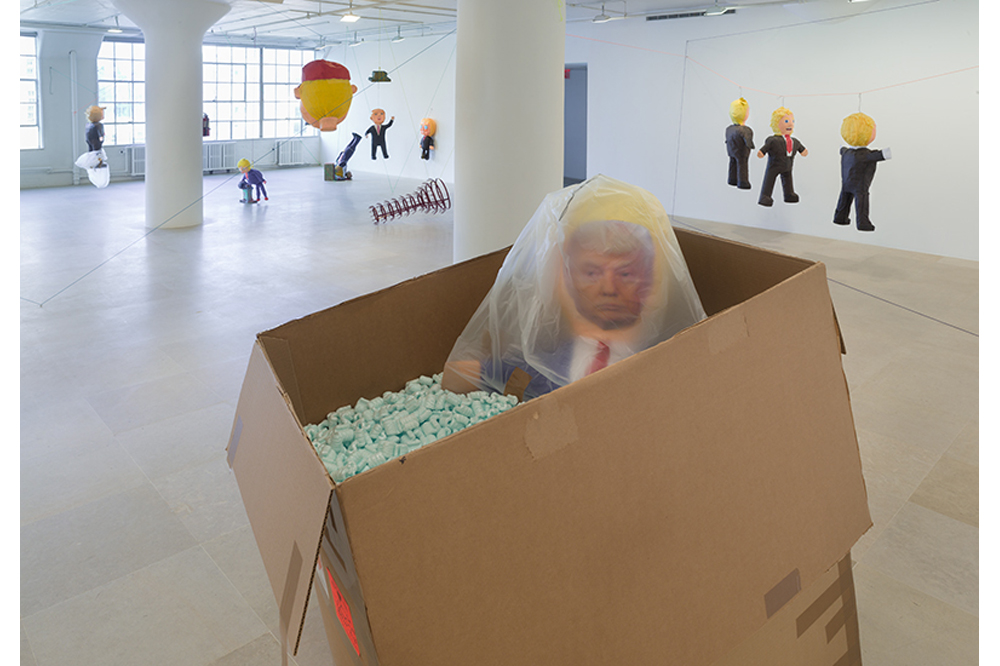




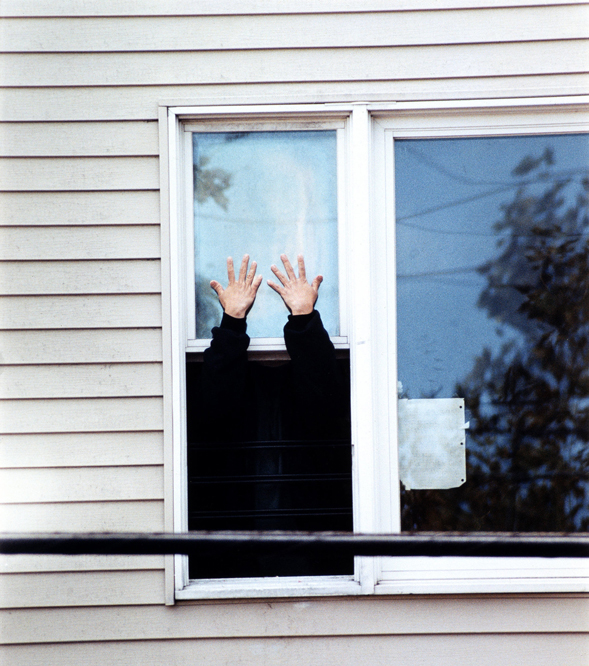
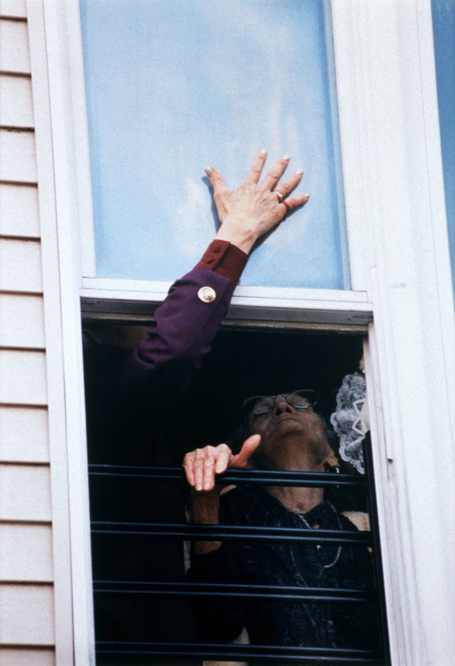
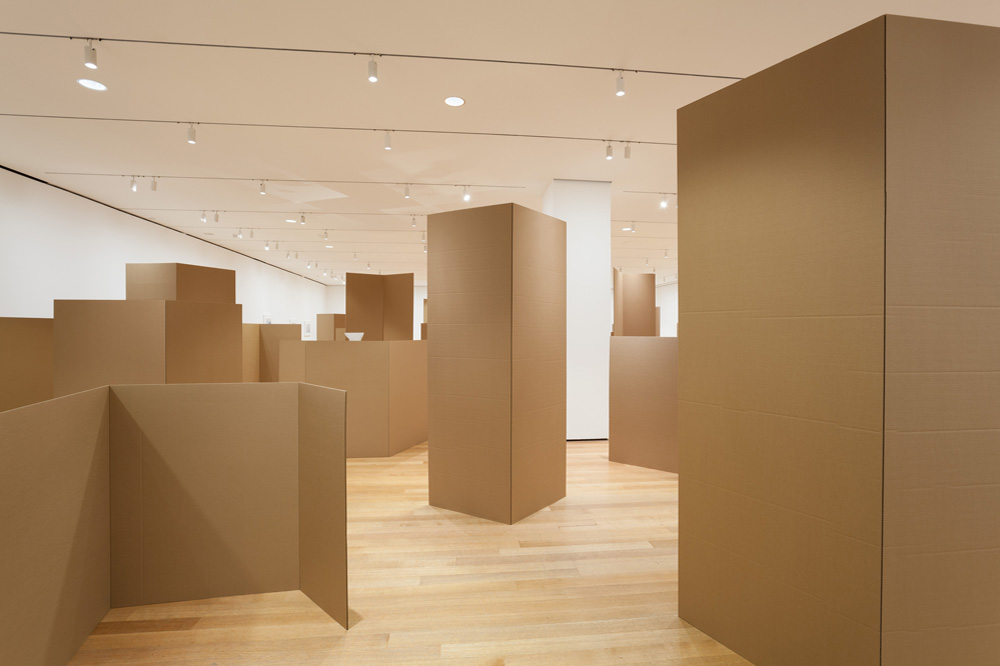























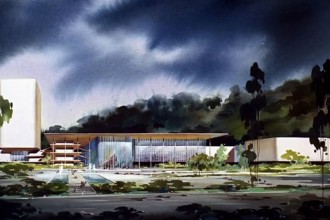
2 Comments